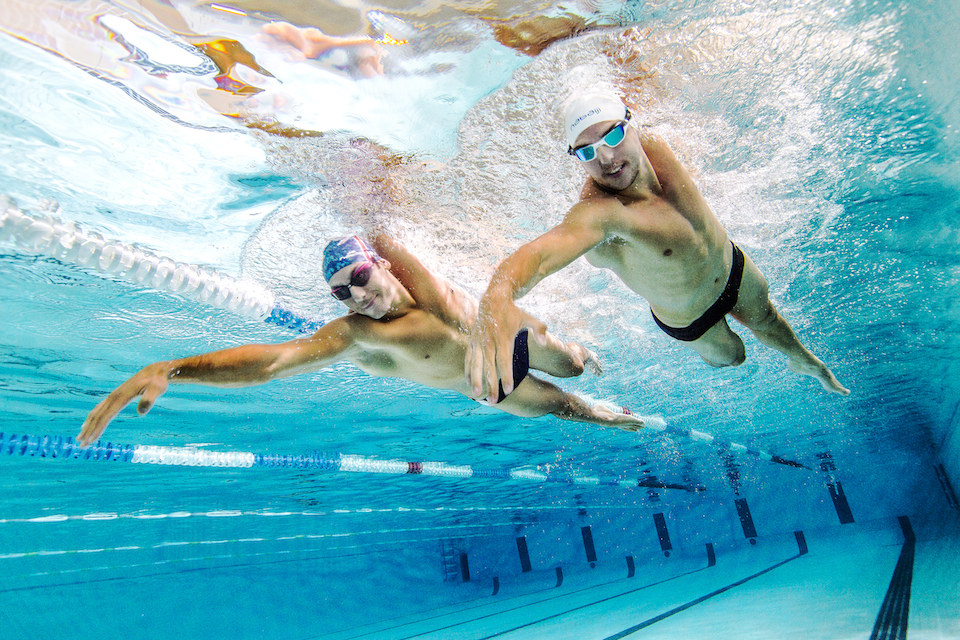Now that the triathlon season is almost over in most parts of New Zealand, athletes and their coaches are starting to plan for the next summer season. Now is the time to work on your weakest disciplines. For a lot of triathletes that is your swimming, but it may be your cycling or running. For single discipline athletes like a cyclist it might be your sprinting or your time trialling.
For those of you that need to work on your swimming and/or have limited experience in the pool this article is for you and is all about the etiquette involved in training at a public pool to enable you to work in effectively with those already training there as well as those that arrive mid-way through your workout.
There are a number of rules that, if applied, will make your time following the black line more enjoyable without getting the ire up of other pool users. Remember they may not be aware of these etiquette rules and you might need to politely advise them.
- Use common sense when choosing a lane to swim in.
Many pools have regular swimmers that always swim in the same lane, at the same time, on the same day (and often do the same workout as well). Maybe you are that person, the creature of habit. This is the person who is most likely to get annoyed if someone interrupts their session.
Prior to getting in the pool, observe the lanes to see what pace each person is swimming at and get in a lane most similar to your ability. Don’t solely go by the slow, medium and fast signs that the lifeguards put up. These signs are all relative. We are all ‘slow’ compared to an Olympic swimmer and most people reading this would be ‘fast’ if being compared to a group of ladies from a rest home coming in for their weekly swim.
If there is an empty lane, feel free to use that even if the sign is different from what you think your ability level is.
If joining a lane with other swimmers already present, you don’t know what workout they may be doing. If it is written at the end of the pool, you can only make assumptions about how far through it they are. - Let other swimmers know you are in their lane.
As a courtesy, get into the water and wait for each swimmer in the lane to return to the end that you are at before commencing your workout. This allows them the chance for them to see you in ‘their’ lane and be aware that they have another person swimming with them. This will only take a couple of minutes in even the biggest pool and is a good time to mentally read through your workout or do a couple of quick stretches. - When resting stand beside the lane rope, avoid blocking the wall.
When standing at the end of a lane, stand against the lane rope leaving the cross on the wall free for people to do their tumble turns (or touch and turns) on. It keeps you out of the way and is very courteous. On a similar note, when finishing your repetitions, make sure you pull into the side rather than finishing on the cross, as that will allow people behind you the opportunity to have some wall space to either turn or finish on. - Swim all the way in to touch the wall.
From a coach’s perspective, the thing that irks me the most is swimmers who stop a few metres short of the wall. When I prescribe a set of 100m reps, I want them to be swum as 100m not as 97m (or if it is happening every single length 88m). This decreases not only the physiological conditioning, but also the mental preparation. Over the course of what was a 3km session you would miss out on nearly 400m of swimming! When swimming three times a week that is over a kilometre of swimming, which is a lot of development and improvement you are missing out on just by easing up prior to the wall. - Keep left to avoid collisions.
In New Zealand and other countries where we drive on the left hand side, make sure you swim to the left hand side of the black line. The black line doesn’t prevent us from contacting or colliding with another swimmer coming the other way. Having space between you and them does. The only way to maintain this space (and leave room for overtaking) is to swim to the left of the lane. In countries that you drive on the right hand side of the road, also swim on the right hand side of the lane. - Give yourself some space around other swimmers when you start each rep.
When it comes time for you to commence a rep, have a look around and make sure that a swimmer isn’t approaching the wall. Nothing is more annoying than coming in to turn and a swimmer pushes off right in front of you. Allow yourself at least five second prior to another swimmer arriving or wait five seconds after they have left prior to pushing off the wall.
If they are a much faster swimmer than you, allow them to go through first. This keeps them off of your feet or you off their feet. If your coach has got a specific rest interval in your programme, for the sake of ‘pool harmony’ having a few seconds less or more won’t hurt you.
Following these six rules will make your experience swimming more pleasurable and respectful for other users at the pool where you train.
Get my 4 weeks to a Faster 1500m with only two 2km per week through Training Peaks. Results Guaranteed. Purchase here.
